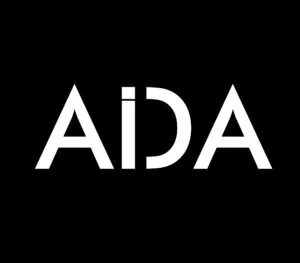How to Make Your Website ADA Compliant
The internet as we know it today is over 30 years old. Throughout most of that time, there has been little, if any, regulation governing its use, opportunities, and proliferation. There was always going to be a moment, however, where unbridled freedom would eventually run into necessary responsibility. When it comes to the Americans with Disabilities Act, it would seem as though that moment is just around the corner, if not already upon us. Many website owners are beginning to wonder how they can make their website ADA compliant for both compassionate and legal considerations.

What is the Americans with Disabilities Act?
The ADA is a piece of civil rights legislation that protects the equal opportunity of disabled Americans in everyday life. The ADA became law in 1990 and was amended in 2008. At first, focusing on the right for the disabled to not be discriminated against when seeking gainful employment, the ADA has since evolved to include equal access to telecommunications (think telephones, closed captioning, and equal access to information).
The passage of the ADA finally gave the disabled the same expectations of rights that had previously been granted to Americans based on race, gender, and sexual preference. After its passage, state and commercial properties began to build ramps and install elevators for people in wheelchairs, hired staff to help communicate with people suffering blindness and deafness, and America began making accommodations so that people who are disabled could live equally with their fellow Americans.
Does the ADA apply to websites?
Title II of the ADA loosely requires government-funded websites to meet certain ADA standards regarding accessibility. While the ADA does not implicitly dictate accommodations for the disabled on the commercial internet, the topic has surfaced recently in a handful of court cases where access to particular websites was impossible for people with certain disabilities. The prospect of litigation in these cases suggests that an amendment to the ADA may be coming sooner rather than later.

Web Content Accessibility Guidelines (WCAG) are not yet law
Dating back to the Obama administration, in 2010, the Dept. of Justice was considering adopting a set of standards to guide websites towards a more accessible future. While the guidelines were not adopted during either the Obama or Trump administrations, it is possible that the current or future administrations will come back to these guidelines and add them into the ADA.
Apis Productions believes the time is now for ADA compliance
Apis Productions has already begun to update some of our clients’ websites to take the ADA into account and provide equal access to disabled Americans that may use these sites. At Apis, we believe that every American deserves to enjoy a quality website experience regardless of their race, gender, preference, or disability. Fortunately, there are now tools available to help us do just that. Let’s take a quick dive into what a potential amendment to the ADA might look like where websites are concerned.
4 WCAG Guidelines to having an ADA compliant website
Obviously, a website has no need to build physical access such as ramps or railings. However, there are many things that we can do to allow for blind people who utilize screen readers, or color blind people who may not be able to distinguish one part of a website from another to improve their experience on our clients’ sites. Here are some of the preliminary guidelines and considerations that we have compiled for this purpose.
- Perceivable – A website must present its information in a way that is perceivable to all users
-
- Images must contain alternative text (i.e. if a user cannot see an image, logo, etc., there must be accompanying text for a screenreader to convey the meaning)
- Utilize captions and descriptions for multimedia content
- Create options for text size, color distinctions, and other design considerations
- Operable – Website navigation and operations use must be accessible equally
- Functionality must be possible from the keyboard alone (i.e. if a user cannot operate a mouse, keyboard options are available to navigate through menus)
- Time allocation – events on a website that appear and disappear must allow adequate time for a reader to fully finish reading the information
- No harmful content (i.e. flashing content that could cause someone with epilepsy to experience a seizure)
- Helpful tooltips that assist a user in navigating content
- Understandable – Both the content and the overall operation of the website should be able to be understood by the user
- Text should be clear to any user
- Functionality of buttons, features, and operation of the site should be predictable
- The website should help prevent users from making mistakes
- Robust – The website should be able to interact with third-party technologies (such as screen readers) that assist the user in accessing and understanding the website.
What do the WCAG guidelines mean for my website?
As you can see, the guidelines printed above share the common goal of creating an as equal as possible experience for a disabled person visiting your website. While the work of making these accommodations may seem daunting, there are tools available to help retrofit your website to accomplish the fulfillment of these guidelines.
Adjust the experience to their own ability
There are programs, plug-ins, and scripts that run on your site giving your users the ability to open a suite of accessibility tools to adjust the experience to their ability. They can change the size of the text, view the site in grayscale, alter everything from the contrast to the amount of background light and truly create the best version of your site, for themselves!
What is left up to you is simply to continue providing quality content that is clear and understandable.
We’re all about it
When the technology meets the need, the answer is always a simple, “yes”. In this case, being able to afford our customers a more complete experience of our website is worth implementing. Perhaps, more than that, we could see it another way. As website owners, we are participating in an enormous global information community where attention equals success. If that is true, then we should always strive to make the tent bigger and more engaged. By including our disabled neighbors more compassionately, we achieve both.




